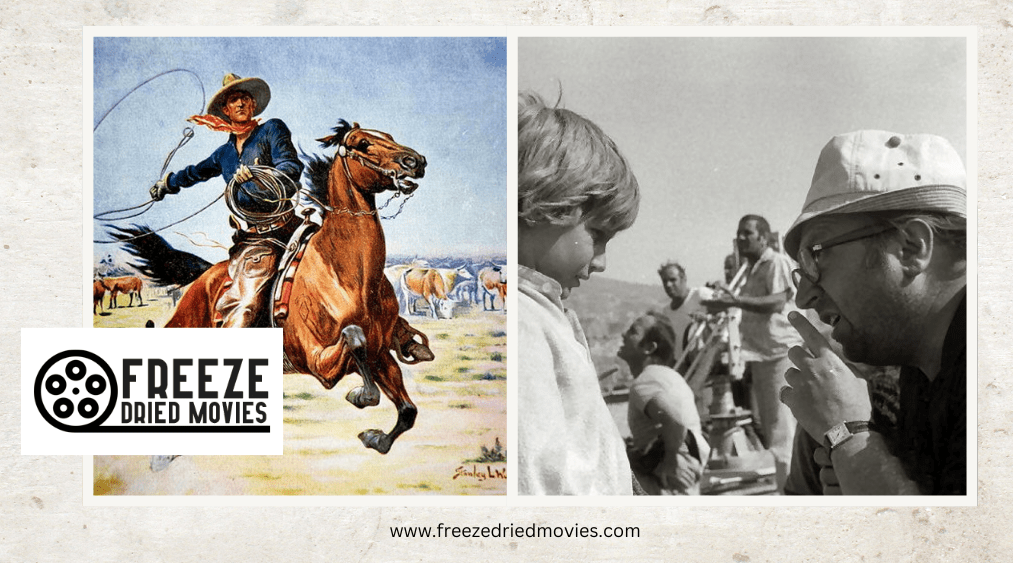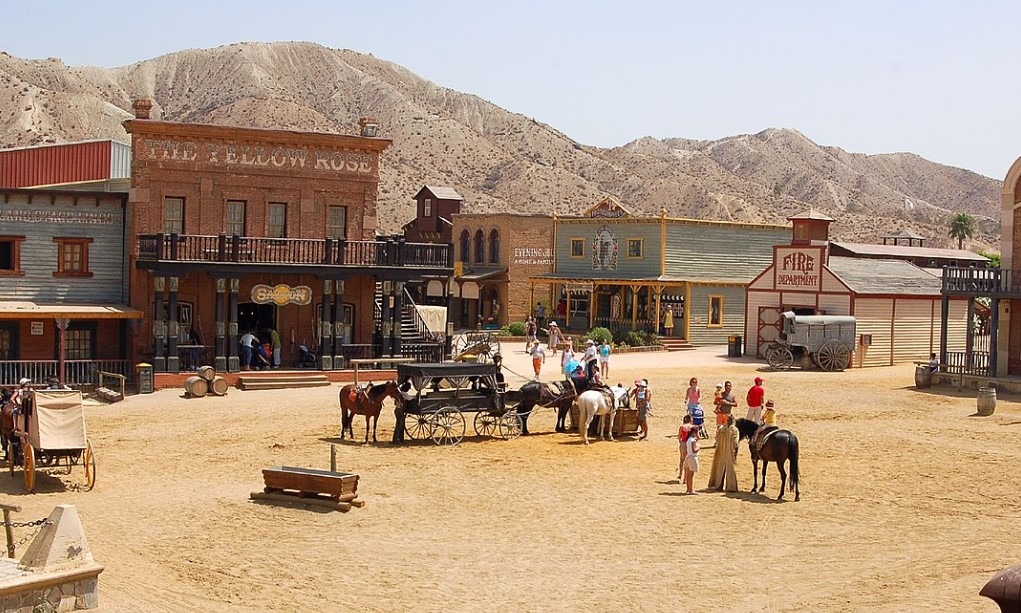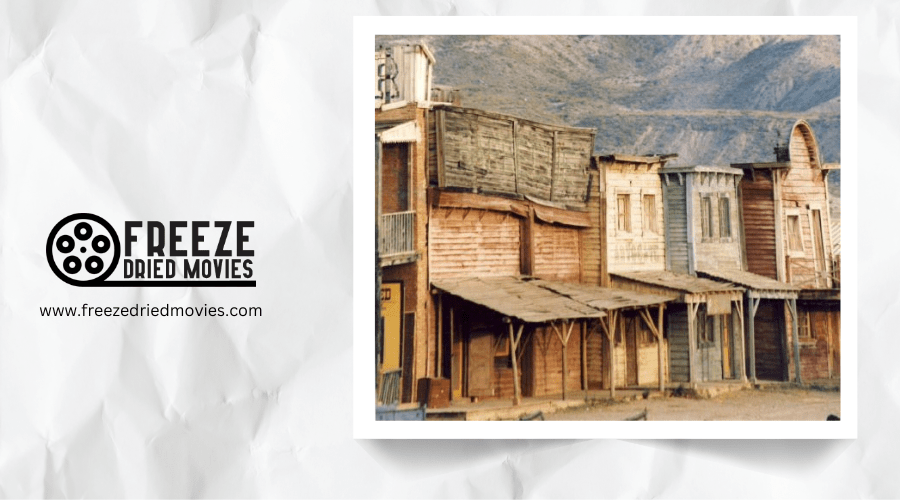Top Spaghetti Western Shooting Locations You Can Visit Today

You'll find yourself standing in the same dusty streets where Clint Eastwood squinted beneath the scorching sun, gun holstered at his side. The Tabernas Desert in Spain remains frozen in time, its weathered façades and sprawling landscapes still echoing with the haunting whistles of Ennio Morricone's scores. From the iconic Sand Hill Cemetery to the meticulously preserved film sets of Mini Hollywood, these locations don't just commemorate cinema history—they let you walk directly into it. What stories might these silent witnesses tell?
The Legendary Sand Hill Cemetery: A Cultural Landmark
Few film locations capture the imagination quite like the Sand Hill Cemetery in Spain. Built by forced laborers under Franco years ago, this iconic filming location from "The Good, the Bad and the Ugly" sits in Europe's only desert—a perfect backdrop for spaghetti westerns that defined our vision of the Wild West.
What's remarkable is how this fictional cemetery transformed from forgotten ruin to protected cultural landmark. Spanish film enthusiasts, captivated by Sergio Leone's "Once Upon a Time in the West" aesthetic, meticulously restored this site that had nearly vanished to time.
Unlike the theme park atmosphere of nearby "mini Hollywood" sets, Sand Hill Cemetery offers an authentic connection to cinematic history. When you visit, you're stepping into the mythic West that existed only on celluloid. This location represents the creative vision that emerged during the Hays Code era, when filmmakers had to navigate strict moral guidelines through inventive storytelling techniques.
Monastery Tortega Del Freya: Sacred Architecture on Screen
While the Sand Hill Cemetery embodies the desolation of spaghetti westerns, the Monastery Tortega Del Freya represents their spiritual dimension. Located in Spain, this 16th-century religious complex served as a prime filming location for several iconic films in the genre.
You'll be struck by the imposing stone walls and ornate facades that provided the perfect backdrop for themes of moral ambiguity and religious symbolism. The monastery's remote desert setting enhanced the sense of isolation that defines these films.
Directors were particularly drawn to dramatic confrontations filmed here, which heightened the existential conflicts central to the genre. Today, you can walk through the same well-preserved architecture that inspired cinematic greatness, immersing yourself in both architectural splendor and film history simultaneously. The chiaroscuro lighting techniques pioneered in 1930s films heavily influenced how these monastery scenes were shot to create dramatic shadows and heighten tension.

Mini Hollywood and Texas Hollywood: Preserved Film Sets
Unlike the historically authentic monastery locations, Mini Hollywood and Texas Hollywood stand as purpose-built marvels created specifically for filmmaking. These impressive sets, nestled in Spain's Tabernas Desert, offer you a chance to walk through the same dusty streets and swinging-door saloons that defined countless Spaghetti Westerns.
The preserved legacy of these outdoor studios remains vibrant today. You can explore classic Western buildings, join guided tours, and even participate in live-action reenactments that transport you directly into iconic film scenes. What makes these locations truly special is their continued functionality—filmmakers still utilize these maintained and expanded sets for new productions.
Similar to how Hollywood's grand movie palaces offered immersive experiences with ornate architecture in the 1930s, these Western sets provide a fully immersive environment for visitors.
For fans of the genre, there's no more immersive experience than standing in the exact spots where legendary Spaghetti Western shootouts were staged.

The Tabernerus Desert: Landscapes That Defined a Genre
Perhaps no natural setting has shaped an entire film genre as profoundly as the Tabernerus Desert has influenced Spaghetti Westerns. This cool, high-altitude desert became the quintessential backdrop for these films despite its cinematic misrepresentation of the actual American West.
When you visit, you'll discover three striking features that made it perfect for filmmakers:
- Barren landscapes created by the unique Fiona effect, which limits rainfall
- Dramatic, rugged terrain that complemented the genre's anti-hero protagonists
- Vast open spaces that directors transformed into mythical Western settings
Though geographically and historically inaccurate, the Tabernerus Desert's contribution to the genre's iconic visuals has made it an essential destination for film enthusiasts seeking to experience the real locations behind these legendary movies.

Monastery of San Pedro Del Alanza: Historical Backdrop
Moving beyond natural landscapes, the Monastery of San Pedro Del Alanza stands as one of the most significant architectural locations in Spaghetti Western cinema. Built in the 11th century, this ancient structure provided filmmakers with authentic religious iconography and isolated settings that enhanced their frontier narratives.
The cinematic preservation efforts have maintained the monastery's historical integrity, allowing you to experience the same ambiance that captivated filmmakers decades ago. As you walk through these hallowed grounds, you'll feel transported to the gritty, atmospheric world of classic Spaghetti Westerns.
You'll discover why directors were drawn to its cloisters and courtyards when you visit this well-preserved site. The monastery's desert location, coupled with its proximity to Tabernas Desert, made it an exceptionally versatile filming backdrop.
Old Wild West Train Station in Nevada: Authentic Frontier Atmosphere
While many Spaghetti Western scenes were filmed in Spain, the Old Wild West train station in Nevada stands as a genuine American frontier relic that captivated European filmmakers. Built in the late 19th century, this remote desert location offers unparalleled cinematic authenticity with its well-preserved architecture and vintage steam locomotives.
When you visit, you'll experience:
- A complete immersion in frontier atmosphere with rustic buildings and period-appropriate features
- The chance to explore the station's interior, including the ticket office and waiting room
- The thrill of standing where legendary scenes from "The Good, the Bad and the Ugly" were filmed
The station's isolated setting and barren landscape create the perfect backdrop that transported viewers to the American West, making it a must-visit for film enthusiasts.

Following Sergio Leone's Footsteps: A Fan's Pilgrimage Guide
Four essential pilgrimages await Sergio Leone devotees looking to walk in the footsteps of the legendary director. Your personal journey should include the Monastery Tortega Del Freya and San Pedro Del alanza, where iconic scenes came to life amid ancient stone walls.
Don't miss the high-altitude Tabernerus Desert, which Leone cleverly transformed into the American West despite its geographical differences. The Sand Hill Cemetery, with its sobering history of forced labor under Franco, offers a powerful connection to "The Good, the Bad and the Ugly."
For true cinematic fulfillment, venture into northern Spain's interior, where you'll discover the spectacular landscapes that inspired the entire genre. These locations aren't just filming sites—they're portals to Leone's visionary world.
Filming Locations and Their Historical Significance Today
The iconic Spaghetti Western locations that captivated Leone's fans have evolved into sites of profound historical significance today. These once-ordinary landscapes now bear cultural importance that transcends cinema.
The Sand Hill Cemetery, built by Franco's forced laborers, now stands as a protected cultural site following its appearance in "The Good, the Bad and the Ugly" - transforming a place of suffering into cinematic heritage.
The Tabernerus Desert reveals fascinating geographical inaccuracies in Spaghetti Westerns - its cool, high-altitude climate contrasts sharply with the American West portrayed on screen.
Locations like the Old Wild West train station, Monastery Tortega Del Freya, and film sets such as Mini Hollywood offer you a unique opportunity to connect with both film history and Spain's cultural landscape.
Will, Monasterio de San Pedro de Arlanza (Burgos), CC BY-SA 2.0



